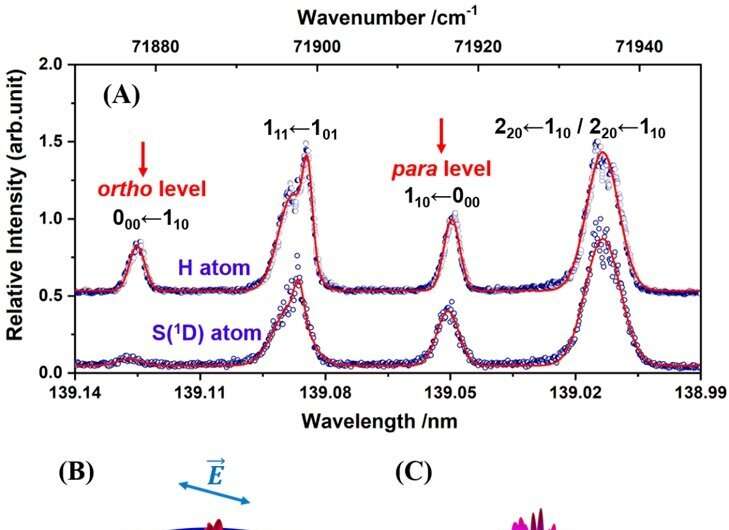The dissociation of a single molecule from a well-defined quantum state offers valuable insights into the mechanisms and reasons behind chemical reactions. It also presents opportunities for collaboration between researchers and quantum chemists specializing in ab initio calculations. The molecules selected for this review, their photofragments, and the resulting chemical reaction networks are all crucial in planetary atmospheres, as well as interstellar and circumstellar environments.
Kaijun and Michael, along with Prof. Xueming Yang, emphasize recent investigations into the photodissociation of triatomic molecules (H2O, H2S, CO2, OCS, and CS2) enabled by the vacuum ultraviolet free electron laser (VUV-FEL) at the Dalian coherent light source (DCLS). They highlight the newly recognized central atom elimination process, which is shown to contribute to the photodissociation of all the mentioned triatomic molecules. Furthermore, they discuss the implications of this photochemistry for our understanding of interstellar chemistry and molecular evolution in the universe.
“This review focuses on only a fraction of the molecules for which the VUV-FEL light source has enabled detailed studies of photodissociation dynamics. It particularly emphasizes triatomic systems of significance in planetary atmospheres and interstellar and circumstellar environments. The chosen examples showcase the advances made possible by using an FEL source for studying molecular photochemistry. Its availability of short photolysis wavelengths simplifies the study of different target molecules across a wide range of wavelengths, facilitating the identification of previously unknown fragmentation pathways,” says Kaijun.

This review of molecular photochemistry has the potential to inspire future research in chemical reaction dynamics and astrochemistry. It highlights the role of increased access to VUV-FEL sources in enabling these studies.
The review paper, authored by Prof. Kaijun Yuan (State Key Laboratory of Molecular Reaction Dynamics and Dalian Coherent Light Source, Dalian Institute of Chemical Physics, Chinese Academy of Sciences) and Prof. Michael N. R. Ashfold (School of Chemistry, University of Bristol), has been published in the journal National Science Review.
More information:
Yao Chang et al, Exploring the Vacuum Ultraviolet Photochemistry of Astrochemically Important Triatomic Molecules, National Science Review (2023). DOI: 10.1093/nsr/nwad158
Citation:
Recent advances in vacuum ultraviolet photochemistry of astrochemically important small molecules (2023, July 10)
retrieved 11 July 2023
from https://phys.org/news/2023-07-advances-vacuum-ultraviolet-photochemistry-astrochemically.html
This document is subject to copyright. Apart from any fair dealing for the purpose of private study or research, no
part may be reproduced without the written permission. The content is provided for information purposes only.
Denial of responsibility! TechCodex is an automatic aggregator of the all world’s media. In each content, the hyperlink to the primary source is specified. All trademarks belong to their rightful owners, and all materials to their authors. For any complaint, please reach us at – [email protected]. We will take necessary action within 24 hours.

Jessica Irvine is a tech enthusiast specializing in gadgets. From smart home devices to cutting-edge electronics, Jessica explores the world of consumer tech, offering readers comprehensive reviews, hands-on experiences, and expert insights into the coolest and most innovative gadgets on the market.

